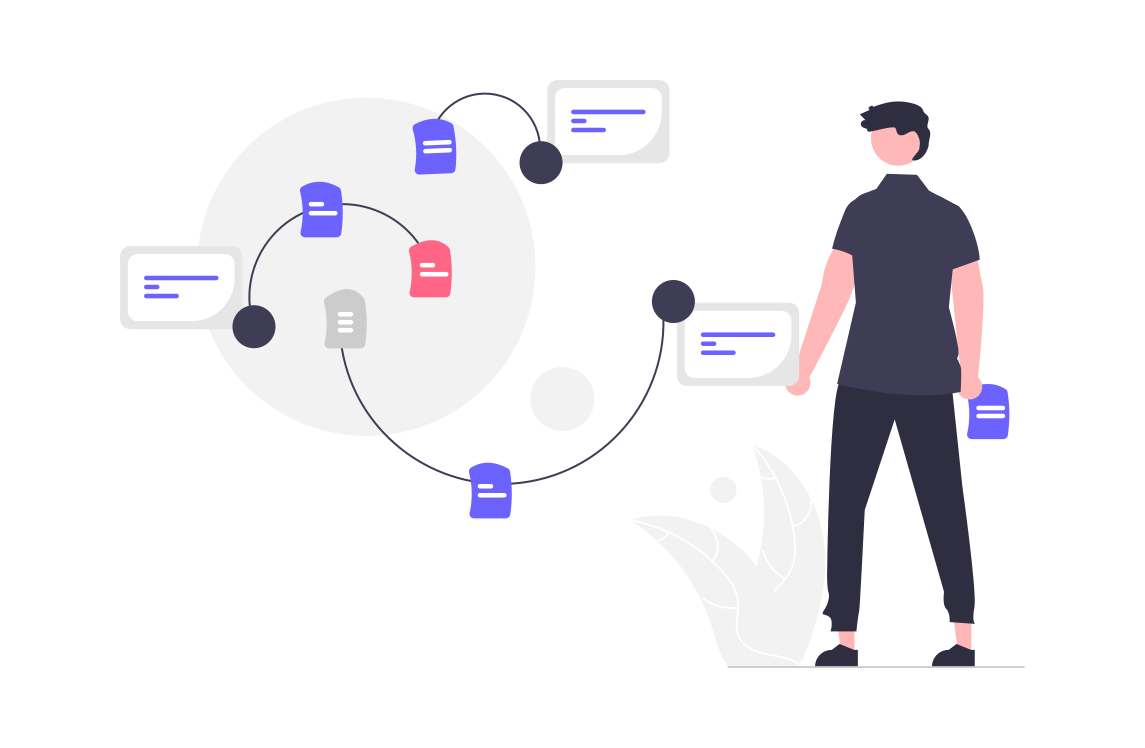Business processes are a sequence of steps that need to be executed to achieve a specific goal within an organization. But how can they be described?
In this article, we will examine when and how they should be described.
Why describe business processes?
- Clear understanding:
It helps employees comprehend the organization’s work and the steps required to achieve objectives. This makes the process more transparent and assists employees in better orienting themselves in their tasks.
- Improved efficiency:
A company can identify and eliminate unnecessary operations, excessive resource and time expenditures, and optimize the sequence of actions. This helps enhance the overall productivity of the company, reduce costs, and achieve more efficient results.
- Establishing control:
It aids the company in monitoring and measuring results to track its progress and take measures to improve processes if they don’t align with the values. Ultimately, this helps the company become more adaptive to changes in the external environment and achieve its long-term goals while satisfying customer needs.
- Rapid optimization:
It provides the opportunity to identify errors and rectify them before they can impact the quality of work.
- Training and knowledge transfer:
Structured and detailed descriptions of business processes facilitate the adaptation of new employees, allowing them to quickly grasp their roles and understand how their responsibilities are interconnected with those of other employees. It also helps in case the need arises to replace or delegate responsibilities among employees.
Types of Business Processes
Before starting to describe business processes, it is necessary to know their types and classifications to do it more effectively.
There are several classifications, but the most common business processes can be divided into 3 groups:
- Core Processes:
These are the key processes in a company that generate profits. They include production, marketing, sales, and customer service.
- Support Processes:
They help your business function smoothly and efficiently. They are not directly related to product creation or service provision but are essential to support core processes. Examples include human resource management, finance (accounting), information technology (computers, software), procurement (purchasing necessary materials and equipment), and supply chain management (control of deliveries and logistics).
- Management Processes:
These processes are related to decision-making and planning at a higher level. They help to manage the business and achieve strategic goals. They include activities such as developing business development strategies, budget planning, task monitoring, change management, and performance evaluation.

It is essential to remember that all these processes are interconnected and influence each other.
When should processes be described?
Companies typically need to describe their processes for three main reasons:
- Optimization of existing processes:
When a business is already established, descriptions help identify weaknesses and areas for improvement. Analyzing all processes allows identifying unnecessary steps, bottlenecks, minor tasks, and other areas that can be optimized to enhance efficiency.
- Implementation of new systems:
Integrating new systems or technologies may require changes to business processes. Descriptions help understand how implementing new systems will impact current operations and what changes are needed for successful implementation.
- Employee training:
Additionally, it is crucial to mention that process descriptions are beneficial when training new employees or introducing new procedures to the organization. Clear descriptions make it much easier for new employees to understand how to perform their duties accurately, contributing to uniformity and consistency in task execution.
How to describe processes?
- Setting objectives:
First, list all the functions performed in the business. Take into account all the key tasks necessary to achieve the business objectives. Then, group these functions into three categories: core processes, support processes, and management processes. This will clarify which processes are important and require special attention.
- Listing tasks:
For each process, create an action plan describing specific steps (tasks) that will help achieve the objectives successfully. Consider the sequence of actions and the interconnections between different tasks. This approach helps bring clarity and identify opportunities for optimization. To assist with this, you can use checklist divisions in services like Notion, Trello, and Jiro.
- Structuring:
Structuring is crucial for better understanding and management of processes. Create a hierarchy where core processes are at the top and sub-processes and tasks are at the bottom. Then, establish links between different processes and sub-processes to show the flow of data, information, and resources between them. Develop a structure that clearly illustrates the hierarchy and logic of business process execution. For this, services like Enterprise Architect, ArchiMate, and BizzDesign can be helpful.
- Visualizing processes:
Once the process structure is gathered, it can be visualized as a flowchart. You can use mind-mapping services like Miro, Mindmeister, and Xmind to describe it. Also, use diagrams and charts to provide a visual representation of the structure and sequence of processes.
Conclusion
It is essential to consider that describing and improving business processes requires a systematic approach and a clear understanding of the company’s current operations. However, by adopting such an approach, it is possible to free up time to focus on other critical tasks while achieving 100% reliability in task execution.
